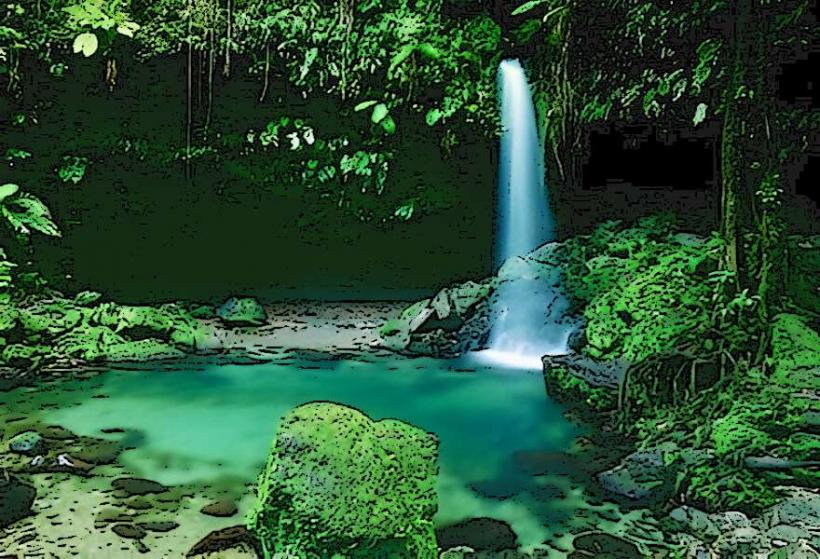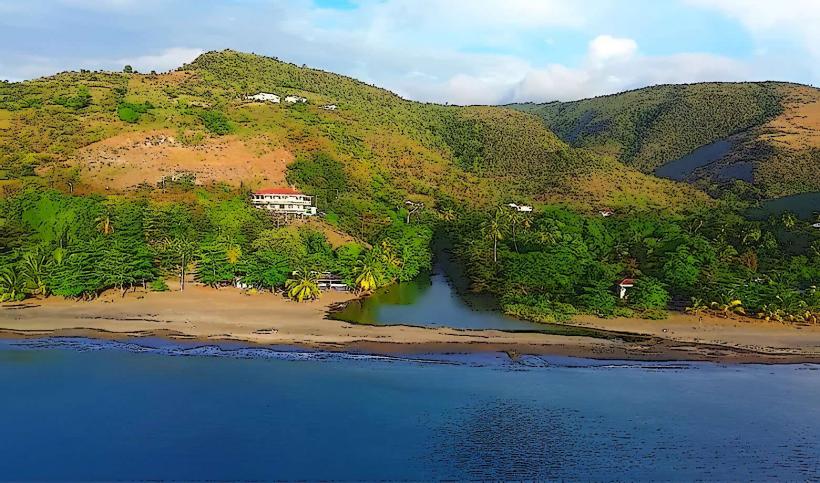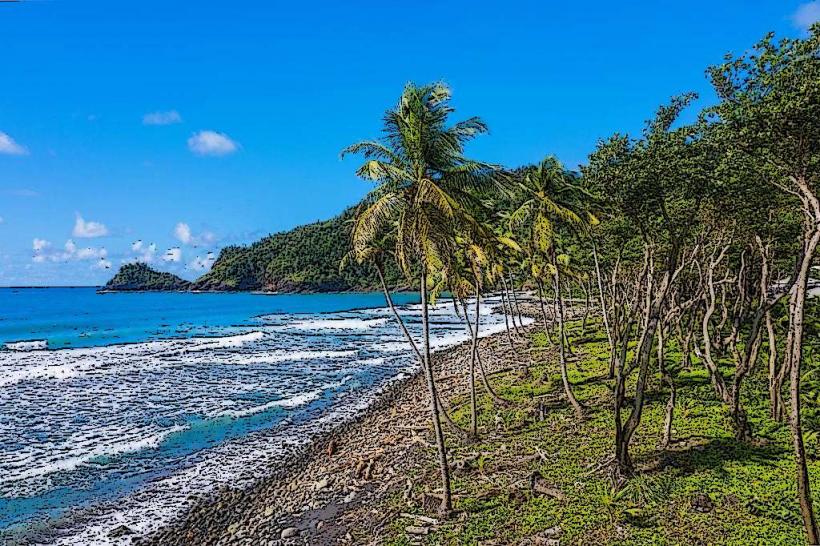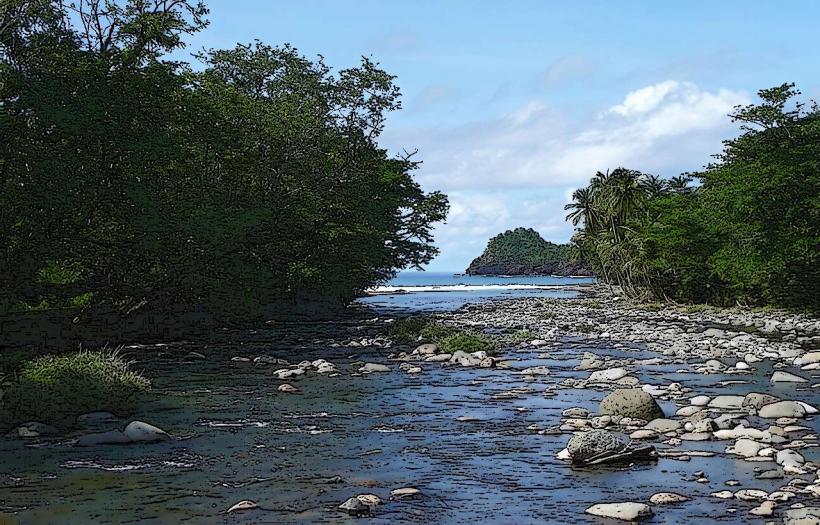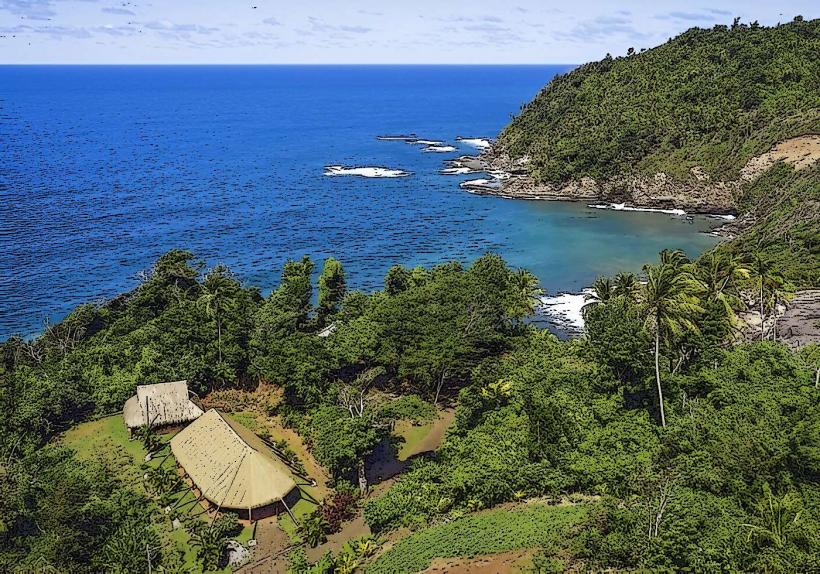Information
Landmark: Kalinago Barana AuteCity: Salisbury
Country: Dominica
Continent: North America
Kalinago Barana Auté is a cultural heritage site and model village located in the Kalinago Territory on the eastern coast of Dominica. It is dedicated to preserving and showcasing the traditions, culture, and history of the Kalinago people, the island's indigenous inhabitants. The name "Barana Auté" translates to "Carib Village" in the Kalinago language, and the site serves as a living museum and a hub for cultural education and tourism.
Overview and Purpose:
- Established: The Kalinago Barana Auté was officially opened in 2006 as part of efforts to preserve the Kalinago culture and promote sustainable tourism.
- Purpose: The site provides an authentic representation of traditional Kalinago life, offering visitors an opportunity to learn about their unique heritage through interactive and immersive experiences.
- Location: It is situated along the Crayfish River, a beautiful natural setting that complements the cultural experience with scenic views of the river and surrounding rainforest.
Layout and Features:
The Kalinago Barana Auté is designed to replicate a traditional Kalinago village, complete with thatched huts, communal spaces, and cultural artifacts. Key features include:
Traditional Huts:
- The village includes several ajoupas (traditional thatched huts) that showcase Kalinago architectural styles. These structures are made from natural materials like wood, bamboo, and palm leaves, reflecting the Kalinago's sustainable way of life.
- Each hut serves a specific purpose, such as housing exhibits, displaying crafts, or demonstrating traditional activities.
Craft Demonstrations:
- Visitors can observe Kalinago artisans creating woven baskets, carvings, and canoes using techniques passed down through generations.
- These crafts are available for purchase, providing economic support to the Kalinago community.
Karbet (Communal Building):
- At the center of the village is the karbet, a large communal hut used for gatherings, storytelling, and cultural performances. It serves as the heart of the village and a space for social interaction.
Trails and River Views:
- The village includes walking trails that lead through the surrounding rainforest, offering scenic views of the Crayfish River. The river holds cultural significance and adds to the tranquil atmosphere of the site.
Exhibits and Artifacts:
- The site features exhibits on Kalinago history, culture, and daily life, including tools, weapons, and traditional clothing. These artifacts provide insight into the ingenuity and resourcefulness of the Kalinago people.
Cultural Performances:
- Visitors can enjoy traditional Kalinago dances, drumming, and storytelling that highlight their spiritual and cultural practices. Performances often take place in the karbet or open-air spaces within the village.
Herbal Medicine Demonstrations:
- The Kalinago have a deep knowledge of natural remedies and medicinal plants. Guided tours often include demonstrations of traditional herbal medicine practices, showcasing the uses of local plants for healing and wellness.
Visitor Experience:
- Guided Tours: Knowledgeable Kalinago guides lead tours of the site, explaining the history, culture, and traditions of their people. Visitors have the chance to engage in hands-on activities like weaving or canoe carving.
- Educational Programs: The site is designed to educate both locals and international visitors about the Kalinago's rich history and their contributions to Dominica's cultural identity.
- Eco-Tourism: Kalinago Barana Auté promotes eco-friendly tourism practices, aligning with the sustainable ethos of the Kalinago people.
Cultural and Historical Importance:
- Preservation of Heritage: The Kalinago Barana Auté plays a crucial role in preserving and revitalizing the traditions and language of the Kalinago people, especially for younger generations.
- Recognition of Indigenous Identity: The site helps raise awareness of the Kalinago’s unique cultural identity and their historical significance in Dominica and the Caribbean.
- Resilience: The Kalinago are among the few remaining indigenous communities in the Caribbean, and the Barana Auté stands as a testament to their resilience and determination to preserve their way of life.
Significance for the Kalinago Community:
Economic Impact:
- The Kalinago Barana Auté provides a source of income for the Kalinago people through tourism and the sale of traditional crafts and products.
- It supports local artisans and helps sustain the community economically while preserving cultural authenticity.
Education and Awareness:
- The site serves as an educational resource for schools, researchers, and visitors interested in learning about the Kalinago people, their history, and their connection to the environment.
Community Pride:
- The cultural village fosters a sense of pride among the Kalinago people by celebrating their heritage and sharing it with the world.
Conservation Efforts:
- Sustainable Development: The Kalinago Barana Auté promotes the use of natural materials and environmentally friendly practices, reflecting the Kalinago’s deep connection to the land and their sustainable way of life.
- Cultural Revitalization: The site plays a vital role in language and cultural preservation, ensuring that Kalinago traditions are not lost to future generations.
How to Visit:
- Accessibility: The Kalinago Barana Auté is easily accessible by road and is located near several other attractions in the Kalinago Territory.
- Opening Hours: The village is typically open to visitors daily, but it is recommended to check ahead for any seasonal changes or events.
- Fees: There is usually a small entrance fee that helps support the maintenance of the site and the local community.
Conclusion:
The Kalinago Barana Auté is more than just a cultural village; it is a living, breathing representation of the Kalinago people's heritage and their enduring connection to nature and tradition. Visitors to the site not only gain a deeper appreciation for the Kalinago culture but also contribute to the preservation and empowerment of this vibrant indigenous community. It is a must-visit destination for anyone traveling to Dominica who is interested in history, culture, and sustainability.

